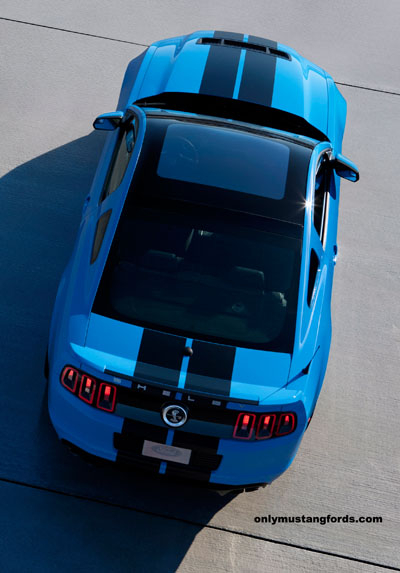|
Coyote Engine Break-In PeriodWhat is the new Coyote engine break-in period? For those of you fortunate enough to have either a 2011, 2012 or 2013 5.0 liter Mustang, or you are just curious, you might be wondering about engine break-in for the new motor. Is it necessary? And if so, what's the best way to get it done? Well, there's the Ford way, and there may be your way.... he he! New Motor versus Rebuild Engine Run-inTypically, on a rebuilt engine from the machine shop, you would want to first seat the rings to the freshly honed cylinders. The purpose of "seating the rings" is to quickly allow the ring's and engine's surfaces to make the best seal (between the fine film of lubricating engine oil). To do this, you must first exert maximum ring pressure against the relatively rough bore surfaces, which serves to improve the actual contact area, by reducing the fine peaks produced from the boring process. The best way to do this, is to generate peak pressure, without generating excessive heat (which would cause wear). That's why many engine re-builders recommend varying the speeds during break-in. They also recommend short bursts of hard throttle, which helps to seat the rings with good pressure, while not allowing the engine oil to glaze the cylinders. Coyote 5.0 Engine Break In By the BookHere's Ford's Standard procedure for Coyote engine break-in on your 2011 Mustang V8, which by the way, are the same instructions that they offer for their other new Ford engines: "BREAKING-IN YOUR VEHICLEYour vehicle does not need an extensive break-in. Try not to drive continuously at the same speed for the first 1,000 miles (1,600 km) of new vehicle operation. Vary your speed frequently in order to give themoving parts a chance to break in. Drive your new vehicle at least 100 miles (160 km) before performing extended wide open throttle maneuvers and at least 1,000 miles(1,600 km) before towing a trailer or before performance/competition conditions. For more detailed information about towing a trailer, refer toTrailer towing in the Tires, Wheels and Loading chapter." Real Life Engine Break InClearly, these new engines are great from the get-go. Most folks I've talked to don't seem to do much in the way of breaking in these incredible 412 horsepower (more in the Boss 302 and newer editions) motors. I keep hearing a whole lot of people varying their engine speeds from idle to full throttle, at the first light out of the stealership, um, I mean dealership! What I would not recommend is taking your brand new 5 liter Mustang and spending the next few hours in stop and go traffic. 2012 Mustang 5.0 Liter Engine TechnologyI won't go too deeply into it here, because it's covered in the 2011 5.0 liter Coyote Engine section. But Ford's new technology for creating the final cylinder bore surfaces, make them incredibly resilient, strong and with a considerably finer surface than you can find from the best engine rebuilder shop. Oil ConsumptionIf you've never had a new car, then the one thing you really want to do, is watch your new Ford Mustang's oil consumption. Until the rings have set, there is a fair amount of cylinder blow-by, which means higher than normal oil consumption, and the possibility of oil contamination. I would recommend, for the first couple of weeks, or say, the first 1,000 miles, it's a good idea to check your oil weekly, to see if it's getting down and top it up if necessary. Follow Ford's instructions on oil changes to prolong the life of the engine and it's not a bad idea to do a sooner than normal oil change, to remove any small metal particles from the breaking in process. Initial Fuel economyFinally, don't be surprised if your gas mileage is not even close to what you've seen advertised for your car. Until your engine is broken in, fuel consumption will be much higher than normal. After a few weeks to a month, that will settle down and you will see just how efficient your new engine will be. |





